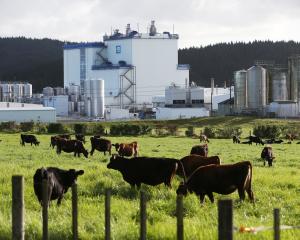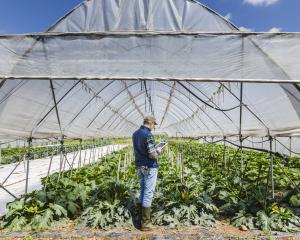The Southern District Health Board's forthcoming decision on outsourcing food service delivery provides an opportune time to consider the role of public procurement in support of food systems that are environmentally sustainable and socially just.
In 2009, the New Zealand Business Council for Sustainable Development estimated that annual public spending on goods and services by all levels of government amounted to $25 billion. That's a lot of purchasing power that can act as a catalyst for more sustainable consumption and production. The proportion of spending on food and food services is significant.
One argument about public procurement is that it should simply be about providing the best ‘‘value'' to the taxpayer, which often amounts to the product or service that is available at the cheapest price.
Of course, as Raj Patel illustrates in his book The Value of Nothing, measuring value is much more difficult than simply setting a price. He uses the example of a fast›food hamburger that is priced at about $3.50 (when in actual fact the ecological, social and primarily health costs of that hamburger amount to as much as $200), to illustrate that focusing on price often masks other values that simply aren't accounted for.
In the context of food, it may in fact be cheaper in dollar terms to outsource food service provision, but that does not account for the full cost in terms of how and by whom the food is produced, prepared, served, consumed and wasted.
Alternate arguments about public procurement focus not simply on accounting for costs, but also using the purchasing power of public agencies and government to achieve positive public policy benefits.
For example, New York City (the second largest institutional food buyer in the US) has developed a local food procurement policy that is designed to support local food production and processing with a goal of encouraging public agencies to provide meals that are fresher, healthier and more seasonal while supporting local and regional economic development.
The local food policy allows public agencies to favour local food providers, provided the costs are not more than 10% of the lowest competitive bid. In addition, agencies are able to set criteria in contracts about how food is produced and to work together to support business opportunities where gaps in food production might exist.
In Toronto, local food procurement started with key University of Toronto food service providers who were encouraged to shift their purchasing towards more local and sustainable food. That process was supported by the work of a non›profit that developed a certification and labelling scheme that recognised local producers and raised awareness of local sustainable food product options. Toronto City Council subsequently adopted a policy to progressively increase the percentage of local food out of the $11 million it spends per year onfood for day›cares, shelters and seniors' homes.
Consciously shifting the way we allocate resources for institutional food purchasing can have an important impact on the success of existing local producers, improve the viability for others to enter the market and to shift the way that they produce food.
In Dunedin, we have some significant institutional food purchasers. Imagine the impact on the viability of local sustainable food production and processing if the university, polytechnic, DCC, schools and the SDHB shifted just 10% of their existing non-local food purchases towards more local sustainable options.
Such a shift would take time. It would require efforts to rebuild local food system capacity, raise awareness of local food opportunities and develop a means of identifying and labelling what is meant by ‘‘local'' food. But most importantly, it requires keeping control over the food procurement process and being willing to consider the value of local food provision beyond simply price.
- Sean Connelly is a lecturer in the University of Otago Department of Geography. Each week in this column, one of a panel of writers addresses issues of sustainability.












